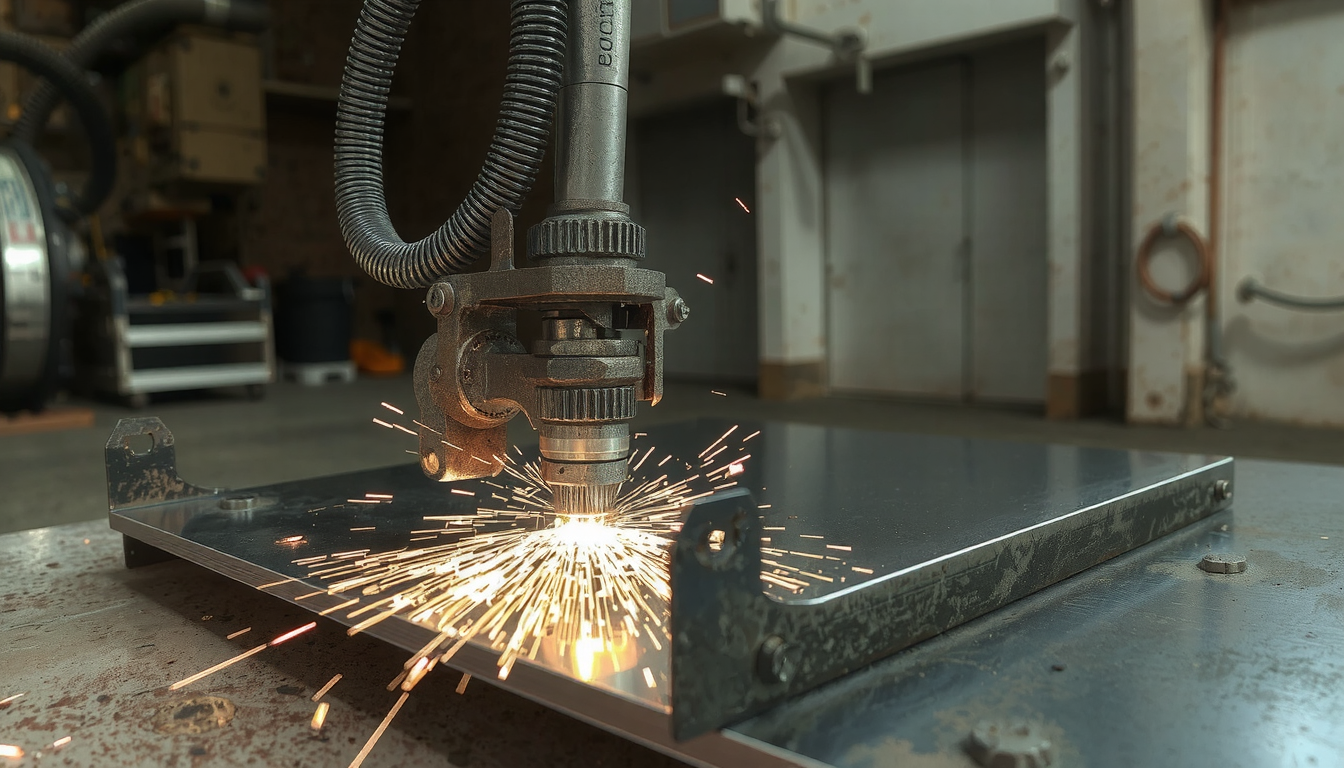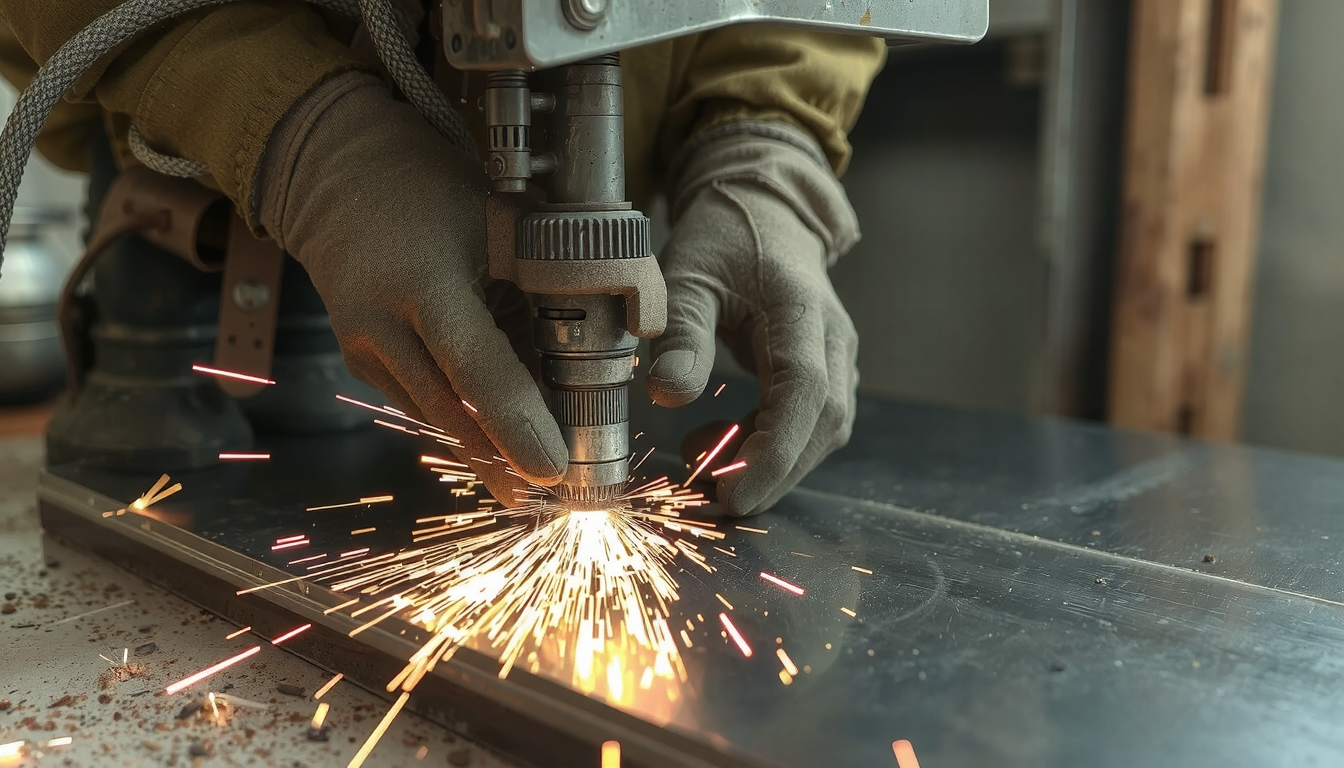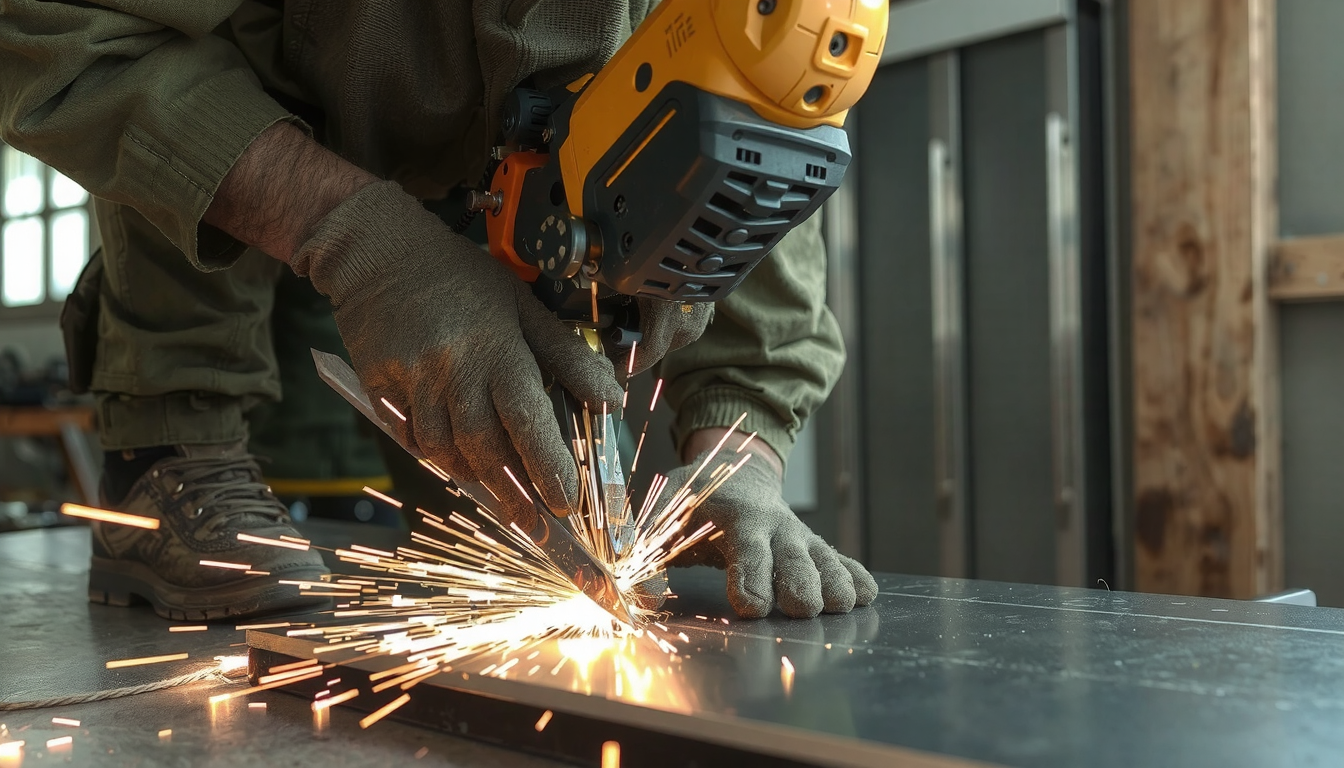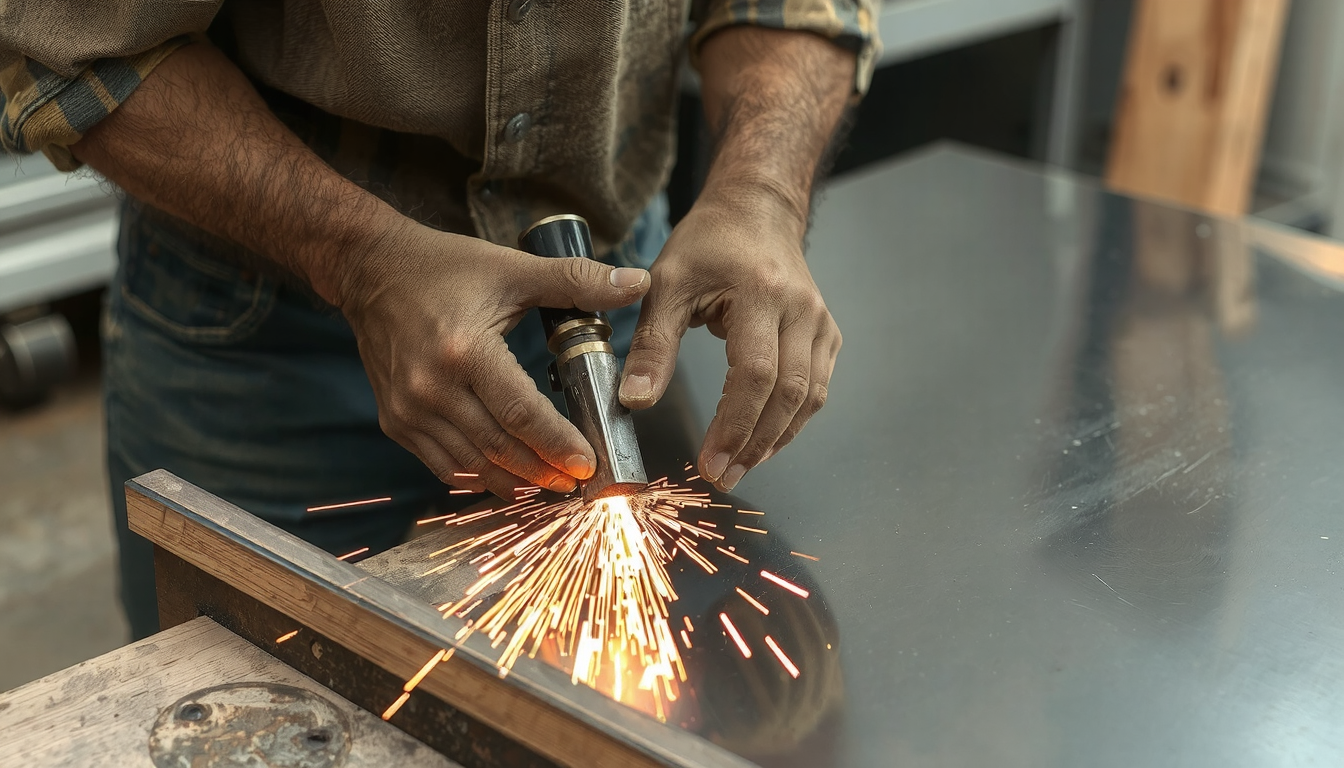Introduction: Your First Step to Perfect Aluminum Cuts

You need to cut aluminum sheet metal for your project. You are in the right place. This guide will show you exactly how to do it safely and well.
Aluminum is a great material. But it has special features. Cutting it is easy when you have the right tools and know the correct methods.
We will cover everything you need. First, we will talk about safety rules. Then, we will help you pick the best cutting tool for your job. We will give you step-by-step instructions for each method. Finally, we will share pro tips for getting a clean, perfect finish.
Safety First: Essential Precautions for Cutting Aluminum Sheet Metal
Working with metal requires your full attention to safety. Sharp edges and flying chips can cause serious injury. Before you make a single cut, you must follow these rules. Putting safety first is the most important step in learning how to cut aluminum sheet metal.
-
Personal Protective Equipment (PPE) is Non-Negotiable
- Safety Glasses or Goggles: Always wear them. They protect your eyes from tiny metal chips that can fly off during cutting.
- Guantes: Use sturdy, cut-resistant gloves. Avoid bulky gloves that make it hard to hold tools.
- Hearing Protection: Power saws are very loud. Earplugs or earmuffs are essential to protect your hearing.
- Long Sleeves: A long-sleeved shirt protects your arms from hot chips and sharp edges.
-
Work Area Safety
- Make sure your workspace has good airflow.
- Always secure your aluminum sheet with clamps. A sheet that slips while you are cutting is a major danger.
- Keep your work area tidy and free of things you could trip over.
Before You Cut: Understand Your Aluminum Sheet
To get the best results, you need to know a little about the material you are cutting. Aluminum is not like steel. Its properties change how you should cut it. Understanding these points helps you choose the right tool.

Aluminum is soft and can feel “gummy” when you cut it. This softness means it can clog up saw blades if you use the wrong kind.
The metal also moves heat very well. This means heat builds up fast during cutting. Too much heat can melt the aluminum onto your tool and ruin the cut.
The most important factor is how thick your sheet is. The method you use for a thin sheet is very different from the one you use for a thick plate. Thin sheets are typically under 1.5mm. Thicker material is often called plate. It is 6mm or thicker.
Choosing Your Method: The Right Tool for Your Project
The “best” way to cut aluminum sheet metal depends on your project. You need to think about the sheet’s thickness. You also need to think about the type of cut and the tools you have. This table will help you decide.
| Herramienta | Best For (Sheet Thickness) | Cut Type | Pros | Cons |
|---|---|---|---|---|
| Tin Snips/Aviation Snips | Thin sheets <1.2mm | Straight & Curved | Cheap, no power needed, good control | Hard work on thicker sheets, can bend edges |
| Utility Knife (Score & Snap) | Very thin sheets <1.5mm | Straight only | Very clean edge, cheap, quiet | Only for thin material, requires some practice |
| Jigsaw | Thin to medium sheets <6mm | Curved & Complex | Excellent for curves, very versatile | Slower than a circular saw, hard to get perfect straight lines |
| Circular Saw | Thin to thick sheets >1.5mm | Straight only | Fast, powerful, creates very straight cuts | Loud, needs a special blade, risk of kickback |
| Professional Methods | Any thickness | All types | Perfect precision and finish, fast | Needs access to professional fabricación de chapa metálica services, expensive for single parts |
How to Cut Aluminum Sheet Metal: Step-by-Step Guides
Here are detailed instructions for the most common DIY methods. Following these steps will give you the confidence to make clean, accurate cuts. Each guide explains how to cut aluminum sheet metal with a specific tool.
Method 1: Using a Utility Knife (The Score-and-Snap Technique)

This method works surprisingly well for thin aluminum sheets. It gives a very clean break. It is a great technique to learn for small projects.
- Measure and Mark your cut line. Use a permanent marker and a good ruler to make a clear, straight line.
- Align a steel ruler or another straightedge perfectly along the line. Hold it down firmly.
- Score the Line. Use a new, sharp blade in your utility knife. Press down hard and pull the knife along the ruler to score the metal. Repeat this 5-6 times to create a deep groove. You are making a weak point, not cutting all the way through.
- Flip and Repeat. Turn the sheet over. If you can, score the exact same line on the other side.
- Snap the Sheet. Place the aluminum on the edge of a strong table or workbench. The scored line should be right on the edge. Press down firmly on the part of the sheet hanging over the edge. It should snap cleanly along your line.
Method 2: Using a Jigsaw for Curved Cuts
A jigsaw is your best friend for cutting circles, curves, or other complex shapes in aluminum sheet.
- Select the Right Blade. You must use a blade made for cutting metal. A bi-metal blade with fine teeth works best. Look for a high TPI number on the package.
- Set Up Your Saw. Turn the orbital setting on your jigsaw to zero or “off.” This makes the cut slower but much cleaner. It also reduces rough edges. Start with a medium speed setting.
- Lubricate. A lubricant is very important when cutting aluminum. Apply a cutting wax stick or a few drops of cutting oil to the line you plan to cut. This keeps the blade cool and stops aluminum from sticking to it.
- Cut Smoothly. Do not force the saw forward. Let the blade do the work. Guide the saw gently along your marked line. A smooth, steady motion gives the best results.
Method 3: Using a Circular Saw for Straight, Fast Cuts
For long, straight cuts in thicker aluminum, a circular saw is the fastest and most powerful option. Safety and using the right blade are critical here.
- CRITICAL – Choose the Right Blade. You cannot use a wood blade or an abrasive wheel. You must use a carbide-tipped blade made for non-ferrous metals like aluminum. These blades have many teeth and a special tooth shape that cuts aluminum safely.
- Set Blade Depth. Adjust your saw so the blade sticks out just a little bit below the aluminum sheet. About 1/4 inch is perfect. This reduces how much of the blade is exposed. This is safer.
- Secure Everything. This is a key step. Clamp your aluminum sheet tightly to a workbench or sawhorses. Then, clamp a straightedge onto the sheet to act as a guide. Many guides on using a circular saw to cut aluminum highlight this step for safety and accuracy.
- Apply Lubricant. A cutting wax stick is great for this. You can rub it right on the cut line. You can also carefully apply it to the saw blade before you start.
- Make the Cut. Turn the saw on and let it get to full speed before it touches the metal. Guide the saw’s baseplate along your clamped straightedge. Move it smoothly and steadily through the cut. Let the tool work. Do not push it too hard.
Pro Tips for a Flawless Finish

Getting a good cut is the first step. These tips will help you make your final product look professional and clean.
- Use Lubricant. We cannot say this enough. It is not an optional step. A special cutting fluid or wax stick is best. But WD-40 can work if you have nothing else. It cools the blade and stops aluminum from gumming up the teeth.
- Deburring is Key. Every cut you make will leave a sharp edge. After cutting, use a flat file or a special deburring tool to smooth the edges. This makes the part safe to handle and gives it a professional finish.
- “Climb” vs. “Conventional” Cutting. With a circular saw, make sure the blade rotation is pushing the aluminum sheet down into your workbench. This is called a conventional cut. It is much safer than a climb cut, which can lift the material.
- Prevent Scratches. Aluminum scratches easily. To protect the surface, apply painter’s tape along both sides of your cut line. You can also put tape on the bottom of your jigsaw or circular saw base.
When to Go Pro: High-Precision and High-Volume Cutting
The DIY methods above are excellent for many projects. However, they have limits. Sometimes, it is better to use a professional service.
For projects that need perfect edges, very complex shapes, or many identical parts, professional services offer the best results. Industrial processes are among the most popular metal cutting methods for good reason.
Techniques like high-power lasers and waterjets cut with amazing accuracy. According to experts, laser cutting is usually the most exact method for detailed designs. CNC machines can create thousands of parts that are all exactly the same.
For projects that include cutting, bending, and assembly, a full-service fabricación de chapa metálica company is the right partner. If your part needs other features like threads or round shapes after being cut, advanced Servicios de torneado CNC are required. To see what is possible with professional tools, you can explore the work of a modern fabrication company like MekaLite.
Conclusion: Cut with Confidence
You now have the knowledge to get great results. Learning how to cut aluminum sheet metal is about choosing the right tool for your project and using the correct technique.
Always remember to put safety first. Prepare your workspace, wear your PPE, and secure your material. Whether you are making a simple straight cut or a complex curve, take your time and follow the steps. With this guide, you can tackle your next aluminum project with confidence.
Frequently Asked Questions (FAQ) About Cutting Aluminum Sheet
Here are answers to some common questions about cutting aluminum.
1. Can I use a wood-cutting blade on a circular saw to cut aluminum?
This is a bad idea and very unsafe. A wood blade might make one rough cut in very thin aluminum. But the teeth are the wrong shape. This can cause the saw to kick back violently toward you. It will also ruin the blade and the cut. Always use a blade made for non-ferrous metals.
2. How can I get a perfectly straight cut without a large table saw?
The best DIY method is using a circular saw with a guide. Clamp a straightedge to your aluminum sheet. This could be a level or a factory-cut piece of plywood. Place it parallel to your cut line. Then, just run the side of your circular saw’s base along the guide as you cut.
3. Do I really need to use a lubricant when cutting aluminum?
Yes, absolutely. Aluminum gets hot and “gummy” very quickly. This causes it to stick to the blade’s teeth. This makes the tool dull and creates a rough, jagged cut. A lubricant cools the metal and helps clear away chips. This leads to a much cleaner cut and makes your tools last longer.
4. What is the thickest aluminum sheet I can cut by hand with tin snips?
This depends on your strength. But tin snips are usually only good for aluminum up to about 1.2mm. Thicker metal is very hard to cut this way. It will likely bend the edges and could cause an injury.
5. How do I safely handle the sharp edges after cutting?
A freshly cut edge on an aluminum sheet is razor sharp. Always wear cut-resistant gloves when you handle it. The best thing to do is “deburr” the edge right away. You can do this by running a flat file along the edge at a 45-degree angle. A special deburring tool also works very well. This removes the sharp corner and makes the part safe.

